LITURGICAL FORMATION AND RENEWAL PROGRAM - Signs and Symbols invite us to reflect on the mystery of our faith
The signs and symbols of Catholic liturgies are intended to move us to a conversion of heart, thereby transforming us in the mission of the Church to be Christ in our world, Catechist Services Field Officer Mildred Rego has said.
Speaking in the third video for the Liturgical Renewal and Formation program, Mildred explained that over the years, meaningful signs and symbols have come to occupy a key place in the Church that remind us of the history, teachings, and traditions passed down to us as followers of Jesus,
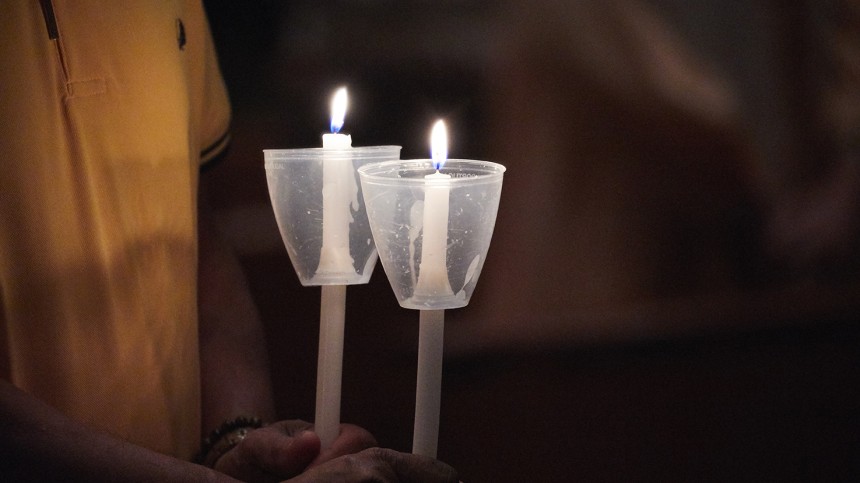
A member of the congregation holds candles during the Easter Vigil at St Mary’s Cathedral in 2019. The signs and symbols used within the Catholic liturgy, explains Catechist Services Field Officer Mildred Rego, go beyond words because they provide us with a great opportunity for reflection and help to “materialise” the spiritual realities that we can experience. Photo: Ron Tan/Archdiocese of Perth.
“The signs and symbols used within the Catholic liturgy, go beyond words, they provide us with a great opportunity for reflection and help to “materialise” the spiritual realities that we can experience,” Mildred said. “These simple elements of everyday life invite us to reflect on the mystery of our faith – it is God acting in our lives,” she said.
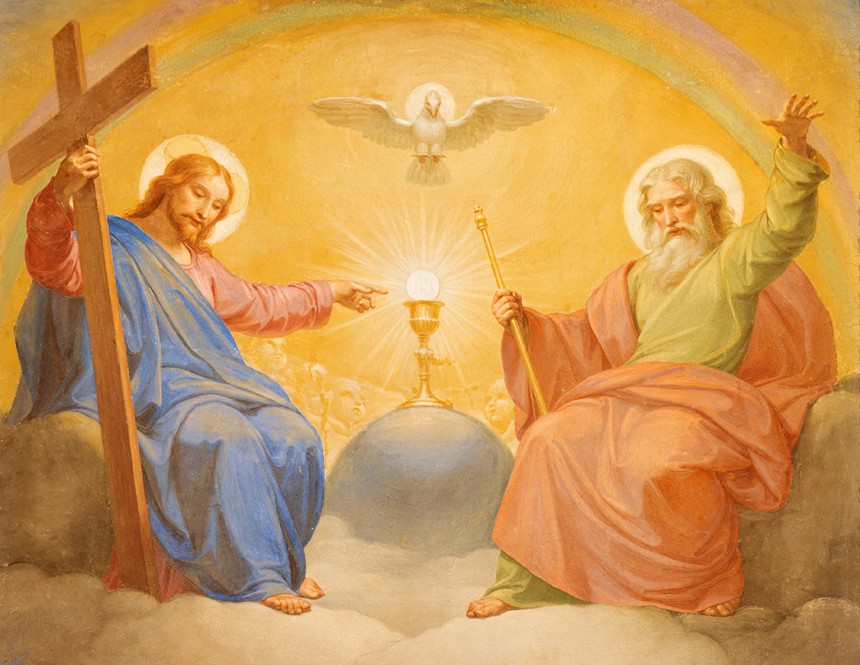
The detail of fresco of the Holy Trinity in the church San Francesco Saverio by Sebastiano Conca (1680 - 1764). Signs are a means of grace pointing us to an experience of God, explains Catechist Services Field Officer Mildred Rego. Photo: Adobe.
The Liturgical Formation and Renewal Program, launched at the start of Lent in parishes across the Archdiocese with an introduction from Archbishop Costelloe, aims to encourage the Perth Catholic community to awaken a renewed love for and awareness of the extraordinary gift we have in the Eucharist, in the Mass.
Leading the program is the Episcopal Vicar for Education and Faith Formation, the Very Rev Fr Vincent Glynn, supported by Centre for Liturgy Director, Sr Kerry Willison RSM, Director of Religious Education at Catholic Education Western Australia, Deacon Mark Powell, Director of the Centre for Faith Enrichment, Dr Marco Ceccarelli and Catechist Services Field Officer, Mildred Rego.
During the four weeks of lent, video messages highlighting an understanding of What is Sacramentality, What is Liturgy, Signs and Symbols in the Liturgy and Why we Gather to celebrate Liturgy will be shown in our parish communities.
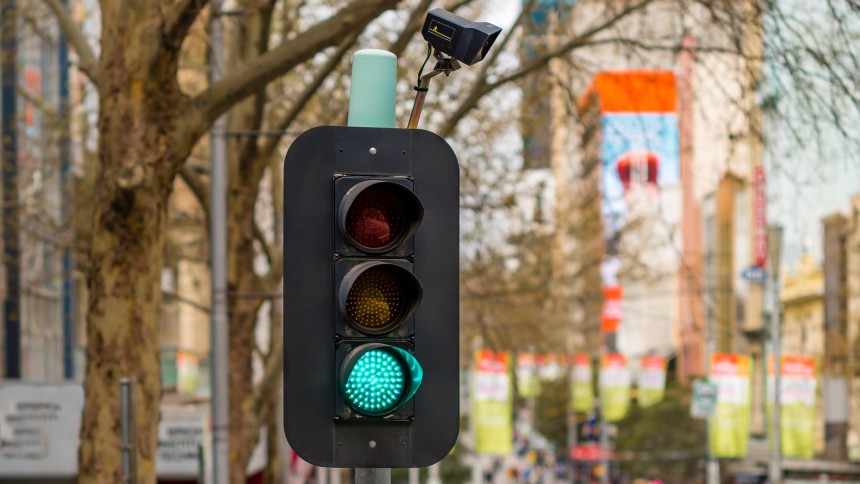
Signs are usually tangible objects that point to another reality, things that we can understand for example, traffic lights, explains Catechist Services Field Officer Mildred Rego. Photo: Adobe.
The videos feature Fr Vincent Glynn, Sr Kerry Willison RSM and Mildred Rego.
Speaking in the video, Mildred highlights that the celebration of the Mass is full of signs and symbols.
“These signs and symbols point beyond themselves to a spiritual reality which we can comprehend and perceive through the lens of faith,” Mildred says.
“They are the visible or tangible signs which the sacred liturgy uses to signify the presence and action of God,” she said.
Mildred concludes saying sacred signs, are a means of grace leading us to an experience of God.
“When the Church community prays or sings or acts, the faith of those taking part is nourished, and their minds are raised to God so that they may offer him their spiritual homage and receive his grace more abundantly,” she said.
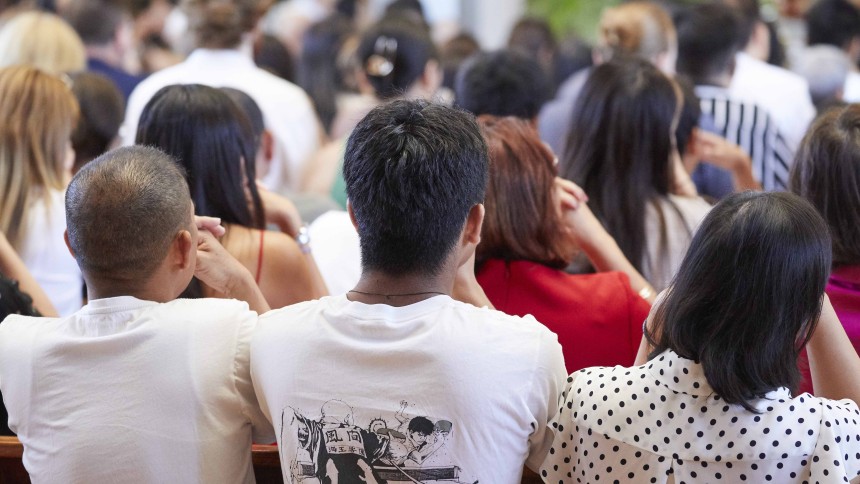
Youth kneel during Christmas Day Mass at St Mary’s Cathedral, 25 December 2022. As human beings we use signs and symbols to communicate with each other through language, gestures, and actions, explains Catechist Services Field Officer Mildred Rego. Photo: Ron Tan/Archdiocese of Perth.
Liturgical elements must foster prayer, sense of communion, says Pope Francis
By Carol Glatz
The aesthetic and artistic elements surrounding the liturgy must foster prayer and a sense of communion, Pope Francis has said.
"The space, light, acoustics, colours, images, symbols (and) liturgical furnishings constitute fundamental elements of that reality, that event, human and divine at the same time, which is precisely the liturgy," he said in a written message to members of the pontifical academies.
The message was addressed to Cardinal José Tolentino de Mendonça, Prefect of the Dicastery for Culture and Education and president of the coordinating council of the pontifical academies, which St John Paul II instituted along with the awards of the pontifical academies.
The message was read on the 14 March by Cardinal Pietro Parolin, Vatican Secretary of State, during the academies' 26th public session, which was organised by the Pontifical Academy of Fine Arts and Letters of the Virtuosi at the Pantheon. The awards this year were dedicated to sacred architecture.
Pope Francis said in his message, "We know well how important the celebratory setting is in fostering prayer and a sense of communion."
The issue of sacred architecture and spaces "is as significant and timely as ever, since there is always a lively, and sometimes even heated, debate on proposals for the renewal of sacred architecture, which has the arduous task of creating, especially in new neighbourhoods, both on the outskirts of cities and in small towns, adequate spaces in which the Christian community can celebrate the holy liturgy with dignity according to the teachings of the Second Vatican Council," he wrote.
He referred to his 2022 Apostolic Letter, Desiderio Desideravi ("I have earnestly desired"), which insisted that Catholics need to better understand the liturgical reform of the Second Vatican Council and the power and beauty of the Mass.
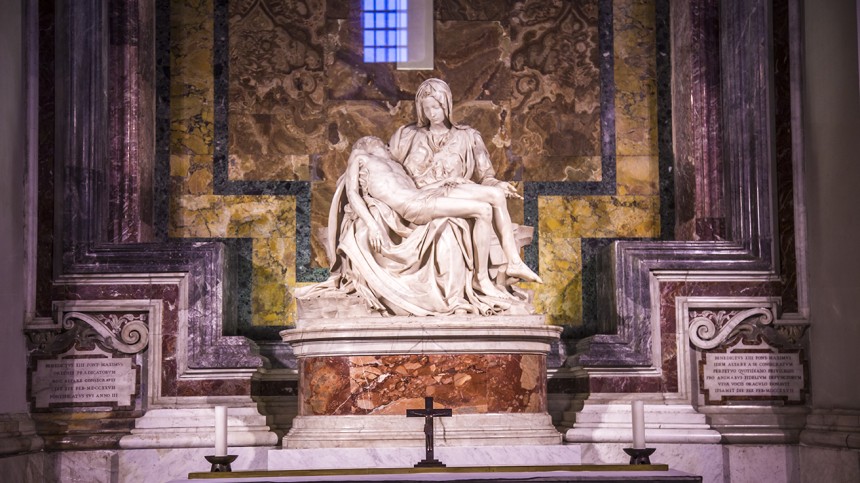
The statue of the Pieta, St Peter’s Basilica, Vatican City. Rome. Signs are a means of grace pointing us to an experience of God, explains Catechist Services Field Officer Mildred Rego. Photo: Jamie O’Brien.
He highlighted the importance of not losing hope in helping people become aware of and understand symbolic language.
"There can be no question of renouncing such language," he wrote in the encyclical; "it is rather a question of recovering the capacity to use and understand the symbols of the liturgy."
The other essential aspect, he wrote in his message, is that the inspiration of artistic and architectural creativity comes from a Christian vision flowing "from liturgical life, from the action of the Spirit and not from human subjectivity alone."
